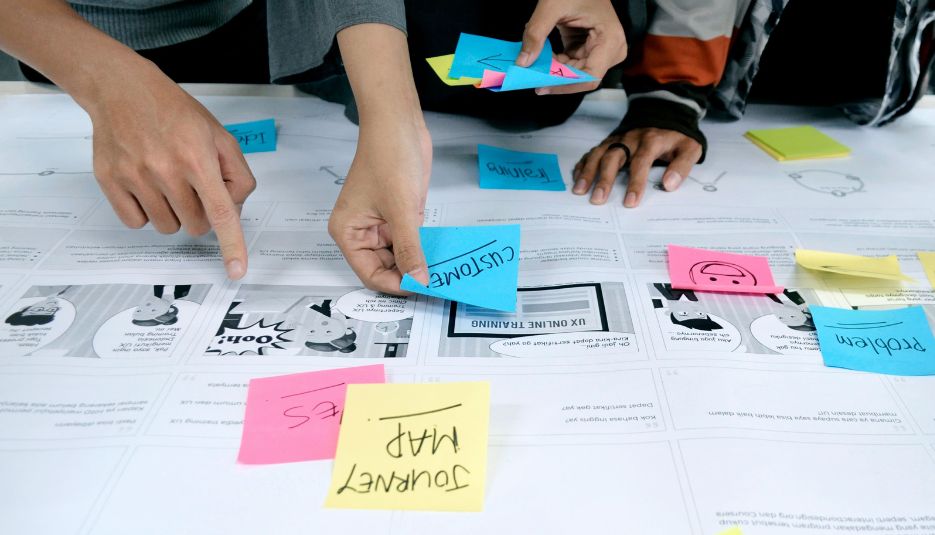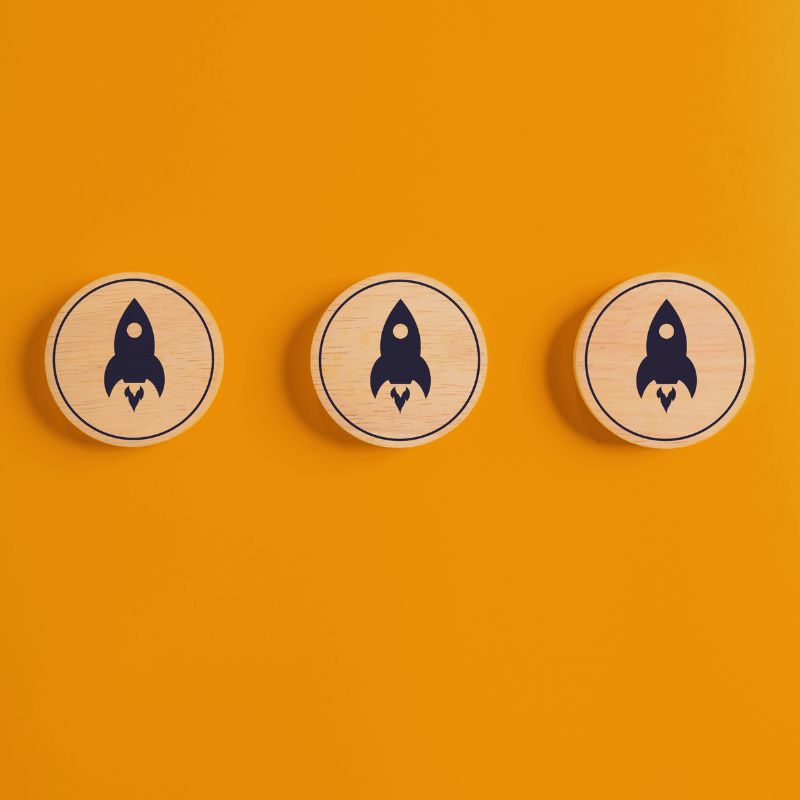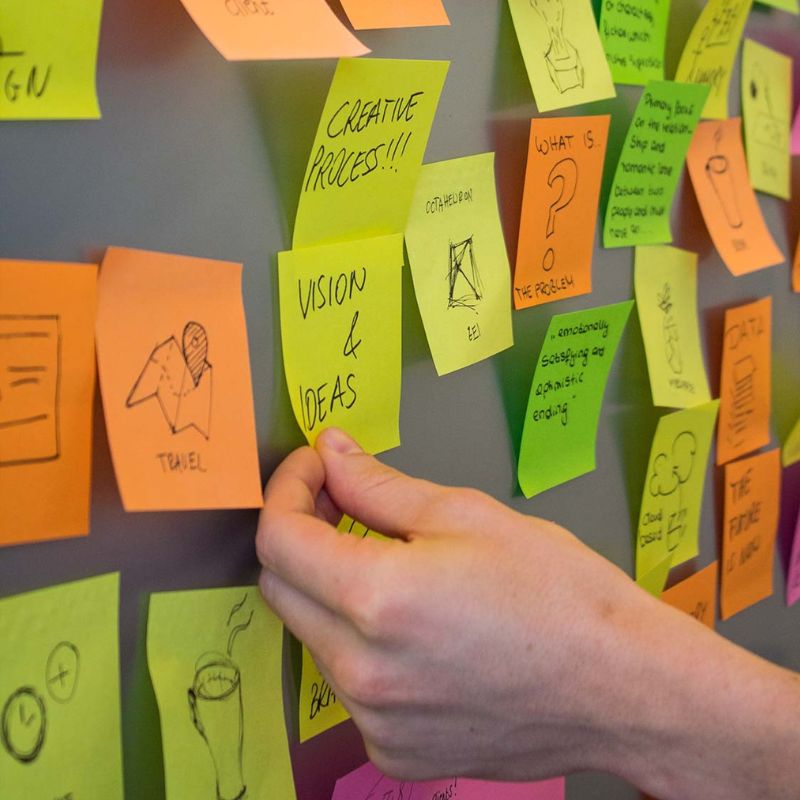25.02.2020
Mit Lean UX zu besseren Produkten
Agilität meets UX: Mit Lean UX entstehen schlanke UX-Prozesse und nutzerzentrierte Produkte. Dafür kombiniert Lean UX mehrere Denkansätze und integriert Methoden und Prozesse zur Verbesserung der User Experience (UX) in die agile Entwicklung. Wie genau das funktioniert und auf welchen Prinzipien Lean UX aufbaut, erklärt Michael Burmester.
Was ist Lean UX?
Bevor wir zeigen, was sich hinter Lean UX – dem schlanken Nutzererlebnis – verbirgt, werfen wir erstmal einen Blick auf die beiden Wortbestandteile. User Experience (UX) wird bei Lean UX breit verstanden. UX steht für eine Gestaltung digitaler Produkte, Systeme und Dienstleistungen, die sich an den Bedarfen und Anforderungen von Nutzern orientiert. Der Schwerpunkt liegt auf einer guten Usability. Dass UX durchaus fokussierter auf positives Erleben während der Nutzung ausgelegt sein kann, haben wir bereits in der Buzzword-Reihe genauer beleuchtet. Dieser Aspekt steht aber bei Lean UX nicht im Vordergrund (weitere Infos zum Begriff UX).
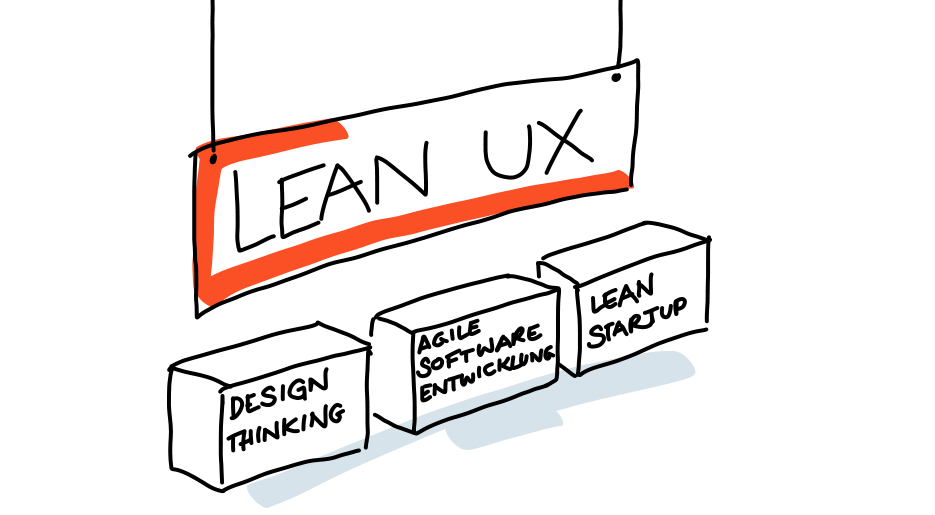
Lean UX geht auf Lean Manufacturing zurück. Lean Manufacturing zielt darauf, den Ressourceneinsatz für die Produktion stark zu optimieren und zu verschlanken. Lean-UX-Erfinder Jeff Gothelf beschreibt drei Fundamente, auf denen Lean UX aufbaut: Eines davon ist Design Thinking, das auf das Finden und Entwickeln innovativer und kreativer Lösungen für komplexe Probleme abzielt. Ein zweites Fundament ist die agile Software-Entwicklung. Gearbeitet wird in kurzen, iterativen Entwicklungszyklen, den sogenannten Sprints.
Schon das Wort „Sprint“ drückt den Kerngedanken aus: Schnell soll es gehen und das Umsetzen von kleineren Ergebnispaketen steht im Mittelpunkt, nicht die Prozesse oder Formalien wie das Erstellen von Berichten. Dank des zyklischen Vorgehens kann das Team das Produkt immer wieder anpassen und flexibel neue Anforderungen in die Planung integrieren. Eine dritte Säule ist Lean Startup von Eric Ries. Lean Startup will das Risiko verringern, dass eine Innovation am Markt scheitert. Neue Produkte müssen sich iterativ in „Experimenten“ – Evaluationsstudien – immer wieder bei Nutzern und Kunden bewähren und werden schrittweise durch deren Feedback optimiert.
Die wichtigsten Prinzipien von Lean UX:

Interdisziplinäre Teams
Ob Software-Entwickler, UX Designer, Marketing- oder Produktmanager – im Team sollten alle Kompetenzen vertreten sein, die an der Produktentwicklung beteiligt sind. Sie alle bringen ihre eigene Sichtweise auf das Produkt, ihr Wissen und ihre Ideen ein. Außerdem minimiert dies Informationsverlust oder ineffiziente Kommunikation zwischen den disziplinären „Silos“.
Wichtig ist, dass jeder im Team jederzeit den aktuellen Stand sowie die nächsten Projektschritte des Projektes im Blick hat. Plakativ ausgedrückt beispielsweise durch Fotos von Arbeitsräumen, die mit einer bunten Flut an Post-its zugeklebt sind. Sie oder ihre digitalen Varianten sind wichtige Kommunikationswerkzeuge, die die Zusammenarbeit im Team effektiv gestalten.

Müll vermeiden
Klingt nach Umweltschutz. Gemeint ist aber, dass das Team nur an Features arbeiten soll, die einen Mehrwert für den Nutzer schaffen und somit ökonomisch sinnvoll sind. Gibt es mehrere Ideen, wählt das Team die aus, die das Problem am besten löst. Tests mit Nutzern und Kunden zeigen dann, welche Ideen tragfähig sind und welche weiter optimiert werden müssen. Was sich als nicht nützlich erweist, wird aussortiert und konsequent nicht weiterverfolgt.
Kontinuierliches Lernen
Wer kennt das nicht: Es gibt den „Rockstar“ oder „UX Guru“ im Team, der genau weiß, was Nutzer brauchen. Denn er ist ja schon so lange dabei und hat so viele, tolle Ideen. Statt auf diese vorgefassten Meinungen zu hören, sollte das Team nach Lean UX vielmehr von den Kunden und den Nutzern lernen: Was brauchen die Nutzer? Welche Ziele haben sie? Wie agieren sie? Was finden sie gut an einem Produkt und was nicht? Dieses Prinzip ist für mich das wichtigste. Denn es drückt eine grundlegende Haltung zu Gestaltung und Entwicklung aus. Diese zeigt sich auch in verschiedenen Vorgehensweisen von Lean UX – sei es Feedback von Nutzern vor Ort einzuholen oder Ideen mit einfachen Hilfsmitteln zügig umzusetzen und zu testen.

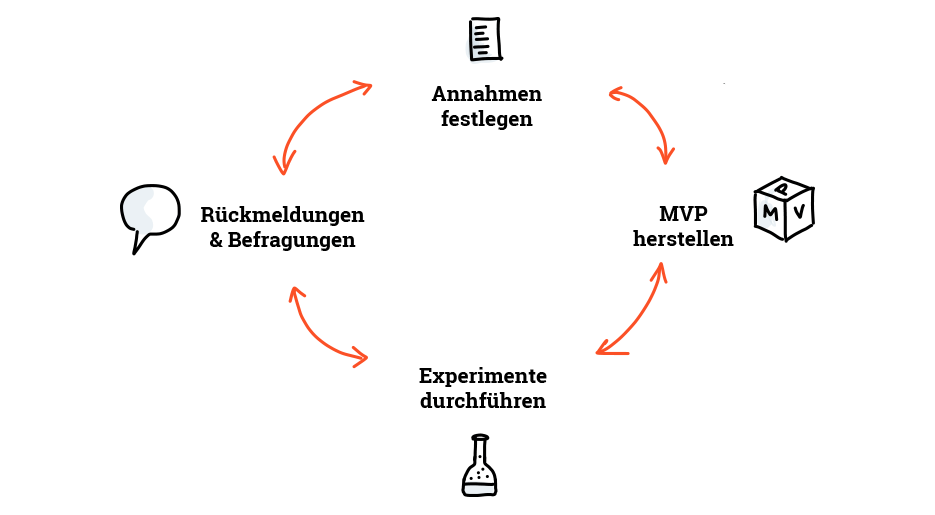
Annahmen formulieren
Daten über den Nutzer und Kunden zu sammeln, ist oft aufwendig oder teuer. So ist nicht immer eine Nutzungskontextanalyse wie in der Norm ISO 9241 beschrieben möglich. Mit dem Konzept der Annahmen findet Lean UX auch für dieses Problem eine schnelle und schlanke Lösung: Die Teammitglieder konstruieren aus ihrem Wissen über die Nutzer Annahmen über den Nutzungskontext. Dieses Wissen ist aber oft lücken- oder fehlerhaft. Pro Annahme schätzen die Teammitglieder ab, wie hoch das Risiko ist, dass die Annahme falsch ist. Die Annahmen mit hohem Risiko überprüfen sie mit Nutzern oder Kunden. So verhindert das Team, dass Konzept und Design auf unsicherem Wissen aufbauen.
In kleinen Schritten zum Ziel
Zum kontinuierlichen Lernen gehören auch die sogenannten Minimal Viable Products (MVP) und Experimente. Ein MVP ist die kleinstmögliche erste Version eines Produkts. Es enthält nur die nötigsten Kerneigenschaften und -funktionen, ist aber schon brauchbar für den Kunden und liefert somit einen ersten Mehrwert. Mit einem MVP holt das Team Feedback von den echten Nutzern ein. Da MVPs sich auf wenige
Features beschränken, sind sie häufig schnell umgesetzt. MVPs können in frühen Phasen auch einfache Prototypen (z.B. Papierprototypen) sein, die wichtige Aspekte eines Produktes aufzeigen. Mit MVPs kann das Team früh und kostengünstig überprüfen, ob seine Annahmen richtig sind. Evaluationsstudien, mit denen das Team Nutzer- und Kundenfeedback erhebt, werden als Experimente bezeichnet.
Fehler erlaubt
Fehler sind Anleitungen zum Besserwerden. Denn auch Misserfolge tragen dazu bei, das Ziel zu erreichen. Denn das Team weiß, welche Wege es nicht mehr verfolgen muss. Diese Kultur des Lernens aus Fehlern ist zentral für Lean UX. Nur wenn Fehler erlaubt sind, hat ein Team die Freiheit, kreative und innovative Ideen zu verfolgen.
Fazit Lean UX
Mit diesen Prinzipien bringt Lean UX agile Entwicklung und menschzentrierte Gestaltung zusammen. Mit Lean UX können Teams zielgerichtet und schnell schlanke und gleichzeitig nutzerzentrierte Produktversionen entwickeln und mit Nutzern testen. Die Nutzungskontextanalyse, UX Konzeption und Nutzer-Studien werden direkt in die Sprint-Planung integriert. Alle Disziplinen sind Teil des Entwicklungsteams. So erfahren alle zügig und ohne Informationsverlust, welche Kenntnisse und Konsequenzen sich aus den Experimenten oder Evaluationen mit den Nutzern sich ergeben. Wichtig ist: Wer Lean UX einsetzen will, braucht einen UX Professional, der den Prozess und die damit verbundenen Methoden von Lean UX fundiert beherrscht. Das Team sollte also zunächst wachsen, um dann möglichst schlank arbeiten zu können.
Der Autor
Prof. Dr. Michael Burmester ist Principal Scientific Advisor bei UID. Seit 2002 ist Dr. Michael Burmester Professor für Ergonomie und Usability im Studiengang Informationsdesign an der Hochschule der Medien (HdM) in Stuttgart. Er forscht zu Methoden menschzentrierter Gestaltung und positiver User Experience. Kern der aktuellen Forschungsarbeiten ist positive User Experience in modernen Arbeitskontexten, wobei jeweils aktuelle technologische Entwicklungen, wie Künstliche Intelligenz, Virtual Reality, Augmented Reality etc. einbezogen werden. An der HdM leitet er das User Experience Research Labs (UXL) und die Forschungsgruppe „Information Experience and Design Research Group“ (IXD) und ist Koordinator des durch das Bundeswirtschaftsministerium geförderte Mittelstand 4.0-Kompetenz-Zentrum Usability.


